|
Vallien's
studio glass was now developing more towards a metaphorical world
with themes such as liberty and captivity, warmth and coldness.
A new method of glassblowing in sand gave him the freedom to control
the artistic process.
Bertil
built up a large network of contacts in Sweden and the US through
his many exhibitions. By now he had acquired an international reputation
and was invited to participate in various workshops at the American
glass studios. In the early 70s, he came into contact with a new
technique. At the Kent State University in Ohio, glass artist Henry
Harlem demonstrated how to blow glass bowls and bottles in a sand
mould. This technique allowed a closer contact with the working
process at the furnace. Bertil took up this method and adapted it
to the requirements of the Åfors factory. The mid 70s saw
the production of a number of a-symmetrical bowls and bottles in
underlay technique with iridescent surfaces produced by various
oxides. Every object being quite unique due to the inconsistency
of the sand-moulds.
He continued
with the sandblasting technique but discontinued the whorl and scroll
motifs from the 60s. The decorative gave way to a new kind of imagery
- waterfalls and reindeer, flying men and lightning flashes. In
contrast to the sparkling extroversion of the sandblasted objects
from the 80s, the style was now enigmatic and introspective. Gunnar
Lindqvist, Bertil's biographer, sees the introduction of imagery
as a further move away from the functional (aspect): "...where
the rich imagery takes precedence over material function - or rather
one should say: the unchanged function of the vessel as receptacle
unites with symbolic imagery which may be at variance with the contents
of the vessel. The bowl begins to carry a visual expression of its
own."
In the
sandblasted bowls from the latter part of the 70s imagery and form
are perfectly wedded. Looking at them one perceives them not as
patterned bowls but as a hybrid of painted canvas and sculpture.
The effect is stunning. With a few symbols he has freed the otherwise
so alluring glass surface. The upper sandblasted area is in strong
contrast to the lower darkened base. It is a complex world that
presents itself. The figures are solitary, transfixed and mute,
the environment cold and melancholy. We cannot tell if this is the
realm of death or the nightmare world of some forgotten culture.
The public saw these bowls for the first time in 1975 at an NK exhibition
in Stockholm. A critic from Form magazine found an element of hopefulness
in that these enigmatic themes provoked reflection and suggestion.
The same
questing approach characterises Vallien's sand-cast sculptures through
the 70s. But there is no clear-cut theme, as in the ships from the
80s. The piece known as 'Untitled' from 1971, is a free moulded
sculpture. With its unyielding weight, and absence of visible imprint,
this sculpture defies interpretation. A closer look, however, reveals
a number of small figures that resemble rock carvings.
The massive "Indian" from 1973 is more lucid (distinctive)
and is his first effort at a sculpted head. The following year he
produced "Celestial Journey's End" which links up with
the mystical theme of wagons from the 60s. It is an evocative creation
that silently asks questions of us: is this the anticipated goal?
Is it the end of the journey? What is death? What is life?
At the
end of the 70s Vallien began using simple forms for sand-casting.
By attaching two cubes to a glass sphere with angled coloured rods
he sought to make use of a variety of contrasting shapes. He was
to cultivate/refine the thematic use of shape throughout the next
decade.
The 70s
may be seen as a long maturing process for Vallien's artistry. It
is now that he discovers his world of metaphor and the first seeds
of the thematic formal world which he would later so masterly refine
during the 1980s. His sandblasted bowls from the 70s are among his
very best work. The sand-cast sculptures are,with few exceptions,more
sketchy, lacking the focus and cogency that characterises his later
work. However, this sketchiness is interesting as we follow his
explorations??, but it is not until he has thoroughly worked out
a theme based on a firm intellectual footing that BV is at his best.
Clarity and mysteriousness are the two opposing words that summarize
Vallien's artistry.
|
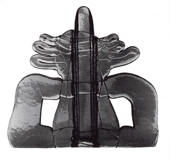
Untitled,
1971. Photo:
Ola Terje.
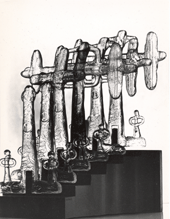
Kultplats,
sand - casted sculpture from 1972. Photo:
Ola Terje.
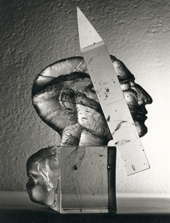
Indian,
sand - casted sculpture, 1973. Photo: Ola Terje.
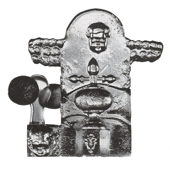
Celestial
Journey´s End, 1974. Photo: Ola Terje.
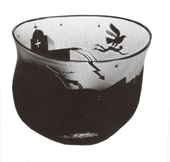
Sand
- blasted bowl from 1976. Photo:
Ola Terje.
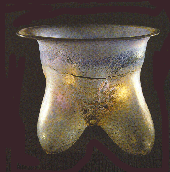
Sand
- blown vase, 1976. Photo: Sten Robért.
|


